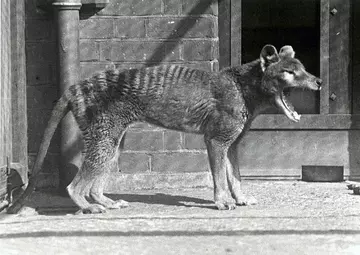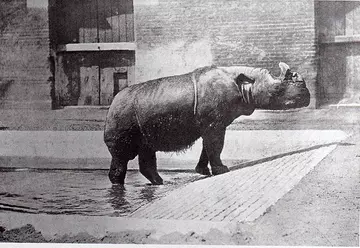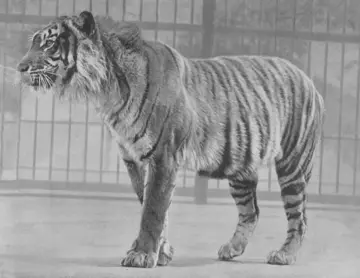
Extinction is a frightening possibility for thousands of species worldwide - and all too real a threat, as history has shown us.
This Halloween you can stop by our extinct animal species graveyard, to see the species that are no longer with us and learn how to prevent extinctions from happening in the future.
Take a journey with us back through history and see some of the animals at London Zoo that are now sadly extinct, and find out how we're working to prevent other animals going extinct.
London Zoo extinct animals
Thylacine

In the early 1800's, both thylacines and people were considered a threat to the new sheep farming industry starting to form in their native Australia, and over subsequent decades they were hunted until hardly any were left. This species was incredibly unique as a wolf-like apex predator living in Australia, especially because not many marsupials (animals with pouches) are predators. As the last surviving member of their family, they would have definitely been an EDGE species if they were still around today!
Sadly official protection of the thylacine was too late to save them - the Tasmanian government introduced measures to save them in 1936, just 59 days before the last of their kind died at Hobart Zoo in Australia.
Northern Sumatran rhino

They were once the most widespread subspecies of Sumatran rhino, and roamed regions of India and Bangladesh. Their scientific name "lasiotis" is derived from the Greek for "hairy-ears", as the northern Sumatran rhinoceros had tufty hairy ears. Our Northern Sumatran rhino "Begum" set a record for being the longest lived rhino on record - she lived with us at the Zoo from 1868 until 1900. Sadly the last confirmed sighting of this subspecies in the wild, was in 1960. They are now thought to be extinct.
Javan tiger

Tigers on the island of Java were driven to extinction, as bounties were issued for hunting the species to make way for land needing to be cleared for rice farming. In 1938 natural forest covered 23% of the island but by 1975, only 8% of the forest remained. Their last confirmed sightings were in the 1970s and the Javan population of tigers was officially declared extinct in 2008.
Since then, there was news of hope - the Javan tiger has since been catergorised as the same subspecies as the Sumatran tiger, so you can still see them at our Tiger Territory today. They do however remain at huge risk of extinction, - there may be as few as 350 Sumatran tigers roaming the wild today.
Quagga

The only quagga to have ever been photographed alive was right here at London Zoo, during the 1850's. Our photos from the Zoo provide the only insight into what a living quagga looked like, after the subspecies became extinct in 1883. Although they look like midpoint between a horse and zebra, they were actually just a regular zebra subspecies with a unique colouration.
Bubal hartebeest

This large antelope with horse-like head once roamed across Northern Africa in big social herds, but they were sadly hunted to extinction together with their main predator, the Barbary lion - which today is extinct-in-the-wild with a small number remaining in conservation Zoos. Thankfully are some similar hartebeest subspecies across Africa which are thriving, such as the Coke's hartebeest which is native to Kenya and Tanzania.
Preventing extinction today
Today conservation zoos like us have huge potential to restore species. At least 72 species have been saved from extinction through care at zoos, aquariums, botanical gardens and seed banks.
While collaborative breeding programmes have been able to restore species like the scimitar-horned oryx, European bison and Przewalski’s horse back into the wild.
Book tickets for Boo at the Zoo now and help us prevent further horrors like these.
Join us this Halloween at our extinct species graveyard to find out more. With every visit you are helping us deliver vital conservation projects in over 80 countries around the world.
Find out about our alliance to protect and restore Extinct in the Wild species rescue operations for species where continued existence in the wild is not possible.
